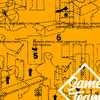At some point in the past few years, someone decided the path to trust at work should start with a document. A personal user manual. A few paragraphs about how you think, how you give feedback, what to avoid, and what you need from your team. In theory, it's a gesture of clarity. Of collaboration. Of inclusion.
When good intentions create distance
But in practice, something else is happening. Instead of creating connection, these documents often generate distance. They read more like ultimatums than invitations—statements of how to treat someone, not openings to understand them. And worse, they subtly shift the work of relationship-building from the writer to the reader. Now it's on the team to interpret, adjust, and adapt—to meet someone else's preferences, with no guarantee of reciprocity. It's not communication. It's control. Dressed up as emotional intelligence.
This isn't an attack on good intentions. But we need to name what's actually happening here. Many user manuals aren't built for mutual understanding—they're built for performance. They present curated versions of how someone wishes to be seen. Not how they actually show up. I've read docs that feel less like working agreements and more like brand statements. Clean, precise, self-aware—and entirely disconnected from the messy, iterative work of building trust. You're not helping me collaborate with you. You're marketing your ideal self and calling it clarity.
The problem with polished presentations
The most dangerous ones aren't the raw, imperfect drafts. They're the polished, jargon-laced PDFs full of carefully framed disclaimers and "boundaries" that sound more like rules than relationship cues. They don't say, "I've done the work." They say, "I expect you to manage me." And they set off a quiet chain reaction—especially when they come from someone in a position of power. Once a senior leader shares theirs, everyone else feels the pressure to follow suit. Write your own manual, or risk being seen as difficult, guarded, or worse—noncompliant with the team's emotional culture. What started as an effort toward transparency ends up enforcing conformity.
When self-protection backfires
Even when these documents come from pain, they can still go sideways. For folks who've been misread or sidelined before, writing a manual can feel like armor. A way to get ahead of the misunderstanding. But a user manual won't protect you from being hurt again. And it won't do the real work of building safety. It just offloads your story onto someone else's plate—without the conversation, without the context, and without the give-and-take that actually creates trust.
Trust is built in dialogue, not declarations
That's the bigger issue here. Trust isn't built in declarations. It's built in dialogue. In the friction of working together. In the awkward moments when someone gets it wrong—and you stay in the room. In the repetitions that teach us who someone really is, not who they claim to be. No document can carry that weight. No doc should try.
You want to build understanding on a team? Don't send a PDF. Ask a real question out loud: What do you struggle with at work? Then listen. In the room. In real time. Let people show you—not just tell you—how they work. And when they do, respond like a human. Not like a reader trying to decode a file.
Real communication requires presence
And let's be clear: just writing something down isn't communication. Not by itself. Communication happens when someone else hears it, reflects it back, pushes on it, misreads it, asks for clarity—and you respond. That's how alignment forms. That's how relationships build. Not with bullet points. Not with branding. But with presence.
There's a difference between expressing a need and outsourcing its fulfillment. A difference between naming your quirks and requiring others to memorize them. A difference between transparency and expectation. Most user manuals can't tell that difference. And that's the problem.
Experience beats documentation every time
You want to build trust? Don't hand me a document. Sit with me in the work. Let me see how you respond when things get tense. Let me witness how you give feedback. Let me experience you—not your outline. Because people don't read manuals. They experience the product. And then they decide whether to trust it.
If what you want is real connection, skip the Dropbox link. Ask better questions. Stay present for the answers. And remember: the best teams don't start with instructions. They start with curiosity.
T L ; D R — Personal user manuals might seem like a shortcut to workplace understanding, but they often create more distance than connection. True trust isn't built through documents but through genuine interactions, active listening, and showing up authentically in difficult moments. Instead of asking colleagues to read and adapt to your manual, engage in real conversations and demonstrate who you are through your actions. The most effective teams prioritize curiosity and presence over documentation and performative transparency.







